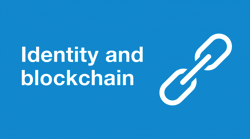Blockchain – Enabling the Fourth Phase of Identity?

The most intriguing work in the Identity world today is the potential application of Blockchain/Distributed Ledger technology for user-focused Identity Management.
I am certainly not a blockchain expert, but I believe these concepts have the potential to solve several nagging problems that have been facing us for many years, including:
- Individual users can confidently leverage their own identities across multiples organizations, including employers, government agencies, online vendors, etc.
- Multiple organizations across public and private sectors could rely on digital identities just as confidently as these organizations currently relay on identification documents such as passports, drivers licenses, etc.
- The huge proliferation of multiple identity relationships that must be set up for individual users to access and use online resources could be drastically reduced.
- The overall digital infrastructure for managing identities could be significantly simplified.Â
- The ability to secure digital identities could be significantly improved in an increasingly hostile online world.
We certainly aren’t there yet, but I am encouraged by work being done.  Some of the recent articles I have read on the subject include:
BlockChain TechnologiesThat Go Beyond Bitcoin.  Item 3 of 6 is “Digital Identity.†Â
Blockchain technologies make tracking and managing digital identities both secure and efficient, resulting in seamless sign-on and reduced fraud.
The Path to Self-Sovereign Identity, blog post by Christopher Allen:Â
I want to share a vision for how we can enhance the ability of digital identity to enable trust while preserving individual privacy. This vision is what I call “Self-Sovereign Identityâ€.
Christopher outlines four broad stages since the advent of the Internet:
- Centralized identity
- Federated identity
- User-centric identity
- Self-sovereign identity.
He then proposes “Ten Principles of Self-Sovereign Identity†that appear to provide a foundation upon which to construct standards and systems to build a real “Fourth Phase†identity system:
- Existence. Users must have an independent existence.Â
- Control. Users must control their identities.
- Access. Users must have access to their own data.
- Transparency. Systems and algorithms must be transparent.Â
- Persistence. Identities must be long-lived.
- Portability. Information and services about identity must be transportable.
- Interoperability. Identities should be as widely usable as possible.
- Consent. Users must agree to the use of their identity.
- Minimalization. Disclosure of claims must be minimized.Â
- Protection. The rights of users must be protected.
The following two articles appear to draw heavily from the concepts presented by Christopher Allen.
The Journey to a Self-Sovereign Digital Identity Built on a Blockchain.  According to IBM’s Jai Singh Arun,Â
Permissioned blockchain technology provides core capabilities that enable a trusted digital identity network to build and operate.
I agree that blockchain technology is essential to achieving the goals outlined by Christoper Allen.
A Self-Sovereign Identity Architecture. (PDF file) A topic paper from the ID2020 Design Workshop:
to identify what a self-sovereign architecture would look like for the Web as well as a number of technical requirements of such an architecture. This topic paper outlines that proposed architecture and its primary components and actors.
It is good to see that smart people are working together to explore how to transform these foundation principles into reality.
IEEE launches standards program focused on blockchain and identity.Â
Technical organization and standards leader, IEEE, is launching a new program to create standards around consumer and patient data protection, specifically as it relates to blockchain and identity. Called, Digital Inclusion through Trust and Agency, the initiative will bring together technology innovators, policy experts and academic researchers to address the topic.
Standards will be necessary to make blockchain – based identity systems pervasive in the world.
Blockchain-based Identity meets the Sovrin Foundation. According to Phil Windley, Chair of the non-profit Sovrin Foundation:
Sovrin is building a scalable, privacy-protected, auditable (based on time-stamped data written to the distributed ledger) ecosytem empowering individuals to manage their identities, support granular selective disclosure and provide organizations with trusted connections to individuals.Â
I am impressed with the work the Sovrin Foundation is doing. Â The fact that an independent, non-profit organization has been established to be the independent overseer of a blockchain-based identity service seems to provide a solution to the inevitable conflicts of interest that exist if organizations like banks, credit bureaus, credit card issuers or the government provide identity services.
I am working to better understand the concepts and challenges in this exciting area. Â It is going to be a fun ride.
Â
Â
Â
Â
